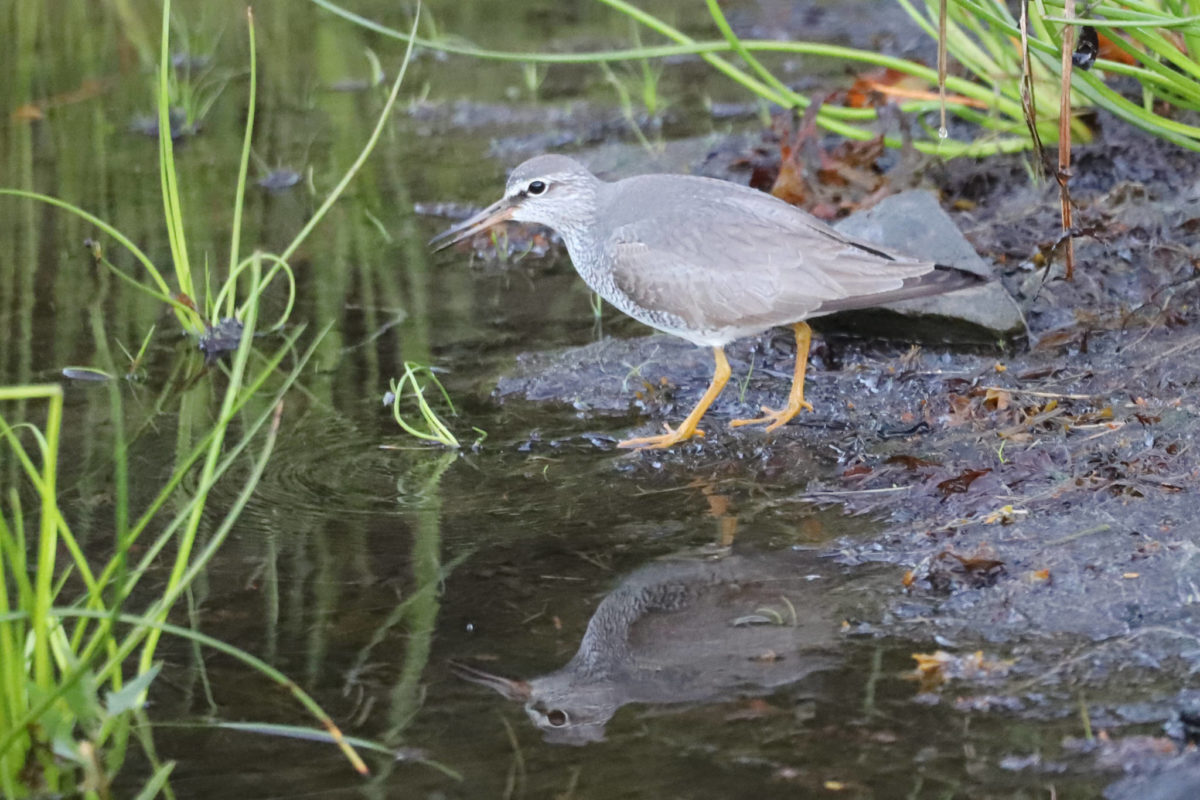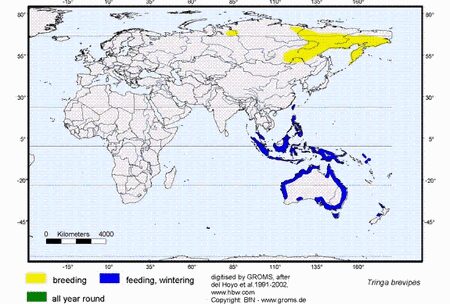
Gray-tailed tattler
Birders in Kitimat and across B.C. got a special treat last week when a rare bird native to Asia, the gray-tailed tattler, was spotted at Minette Bay.
The gray-tailed tattler travels to breed in northeast Siberia, then migrates to anywhere from Southeast Asia to Australia.
This is the first time the bird has been recorded in Canada, according to local bird expert Walter Thorne.
"Perhaps our poor June weather with all the storms has blown it off course in the Pacific," Thorne said.
"It should be nesting in Siberia about now."Thorne was first notified of the tattler's presence through a fellow birder on eBird, an online bird observation database.
"The man was whispering, and what I didn't find out until later was he was whispering because he was standing with his audio recording equipment right in front of bird," Thorne said. "He didn't want to spook it."
The birder told Thorne to come check it out. Thorne got down there with scope and tripod and large camera in about 20min, and within an hour they were able to confirm it was the tattler.

Gray-tailed tattler
From there, word went out into birding community.
"We were inundated with dozens of birders from around B.C.," Thorne said. "It would've been hundreds if not for COVID — and from the U.S., as well.This is a top event in the wildlife of the world."
The sighting of the bird triggered a bird alert for North America, and birders were coming in from all over B.C. to see it, from Prince George, to Dawson Creek, all the way to the Lower Mainland.
"More were arriving each day. Some were even camping out," Thorne said. "The other day I showed up at 5 a.m. and someone had beat me. They were there at 4:15."
Thorne said these keen birders are often referred to as "Listers," because they try to get as many birds on the list of ones they've seen. Top birders have over 400 on their lists.
Local resident and naturalist Dennis Horwood said because of the process that has to occur to confirm a bird's species, that just because this is the first time the gray-tailed tattler has been identified in Canada, it doesn't necessarily mean it's the first time that's it's actually been to Canada.
"It could've been here previously, it's just that no one's authenticated it until now, and that's what makes it rare," Horwood said. "These rare birds come and go and nobody knows for sure."
Horwood said he and the other birders are still not quite sure how the bird ended up in Kitimat, but guesses include being blown off course, accidentally falling in with a flock of a different species that was migrating to Canada, or landing on a ship destined for the B.C. coast.
Thorne said the speculation is that a May storm knocked it from its normal flight path in the pacific, blowing it towards the Canadian West Coast. He's still not sure how it got as far inland as Kitimat, however.

Grey tailed tattler distribution
It hasn't been seen by the larger birding community since Friday, June 26, but neither Thorne nor Horwood are exactly sure where it went. Horward said it might have reoriented itself and flown back up north, or it just might have found it can survive in the Kitimat climate and is hanging around, hidden, but they won't know unless it's spotted again.
"Birds will do whatever they want to do," Horwood said. "If it's able to find food and survive without too much hardship, it might just hang around."
Most of the out-of-town birders who got a chance to see the tattler were satisfied with a one-day visit, but many showed up a day or two too late to spot it.
"You never know, it might show up again," Thorne said. "As soon as real birding community knows again, [the out-of-town birders] will be back in a shot."
Along with the rare gray-tailed tattler, a flying squirrel was recently spotted in the area by Kitimat resident Joanne Monaghan.
And while flying squirrels are indigenous to the area, they're rarely seen because they're nocturnal and quite shy, Horwood said. They usually start getting active at dusk and then go to sleep when it starts to get light come morning, which means it's dark when they're actually able to be spotted out and about.
"They could be in yard everyday and you'd never know it," Horwood said. "There's probably lots around, they just don't come out where you can see them. But if you do, they've got a cute, stuffed animal kind of look, so that's how you know it's them."
Reader Comments
to our Newsletter